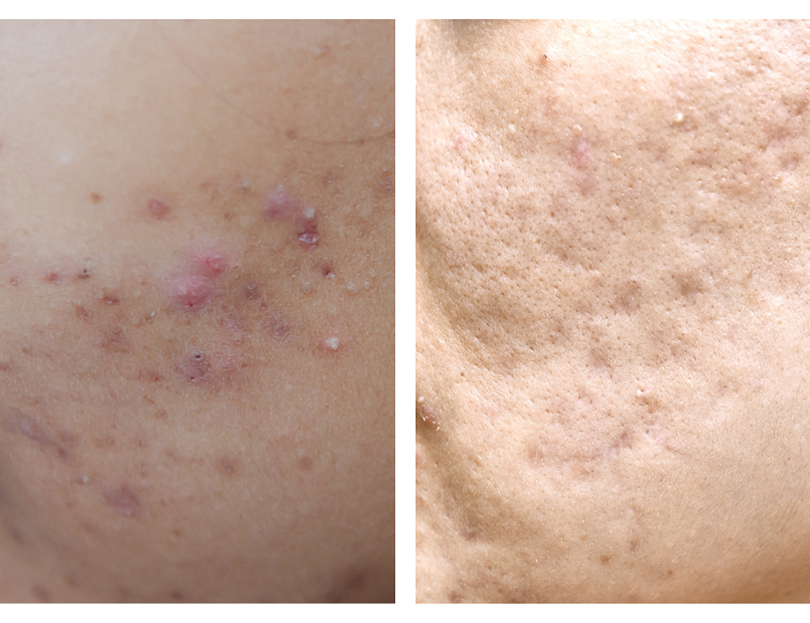Pigmentation (spotted discoloration)
Scarring (acne scars)
Let’s discuss the agents used in the treatment of these conditions that take time to completely disappear.
Pigmentation Treatment
– Careful sun protection
– Azelaic acid (Reduces pigmentation and new acne formation)
– AHAs (Glycolic acid, lactic acid, mandelic acid…) (Assists in fading pigmentation)
– Retinoids (Reduces pigmentation, new acne formation, and aids in mild acne scar removal through collagen production)
– Hydroquinone and arbutin (for pigmentation treatment – must be used under dermatologist supervision due to potential risks)
– Serums containing Vitamin C (reduces melanin production causing dark color, boosts collagen production, acts as a potent antioxidant)
– Niacinamide
– BBlazer
– Spot mesotherapy
Acne Scar Treatment
Scars result from imbalances in collagen synthesis. The best way to prevent scar formation is to begin acne treatment early.
Treatments that stimulate collagen production are preferred for leveling the skin surface in atrophic scars.
Atrophic Acne Scars and Treatment Options
Ice-pick scars
Rolling scars
Boxcar scars
Treatment Options
Topical retinoids for mild superficial scars
Superficial chemical peeling
Microneedling with PRP/mesotherapy
Laser treatments
Collagen injection
Subcision and filler application: Atrophic scars occur due to the pulling of the upper layer of skin by fibrous bands in the lower layer of the skin. Surgical cutting of these bands frees the upper layer, and filler application from below can correct the depression.
Treatment Options for Hypertrophic Acne Scars
Cryotherapy
Laser treatments
Intralesional steroids
As with all skin conditions, the treatment approach for acne scars should be personalized and evaluated by a Dermatology specialist.


